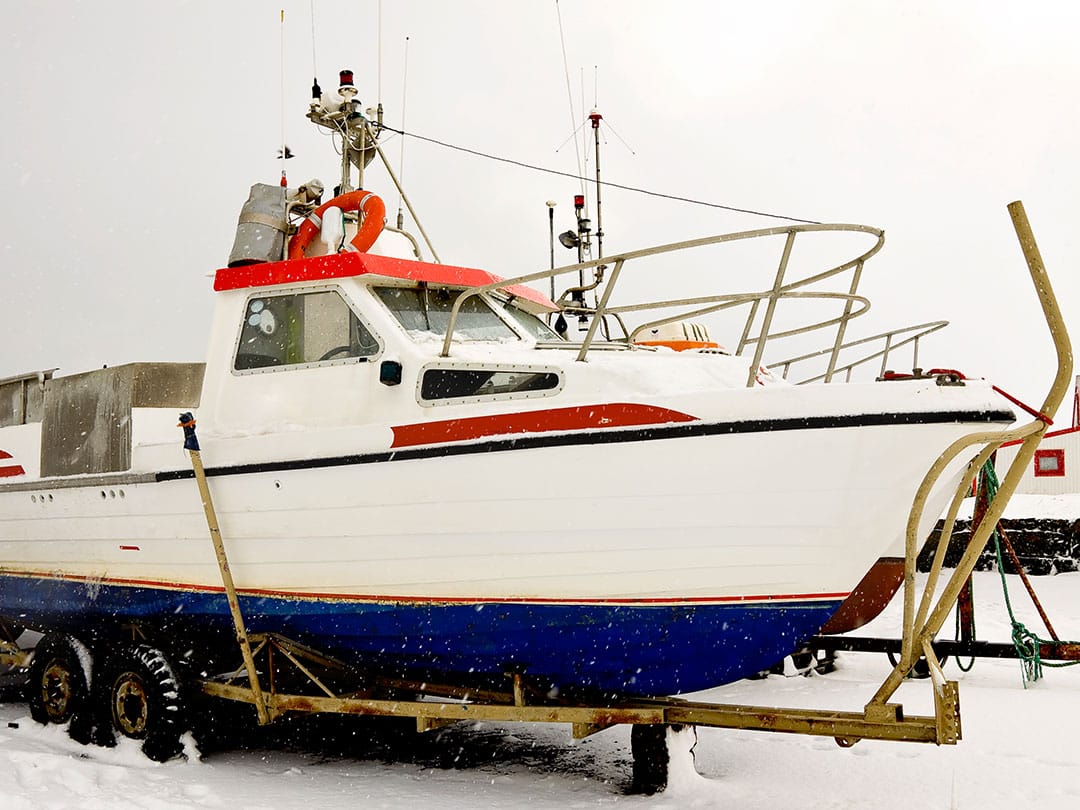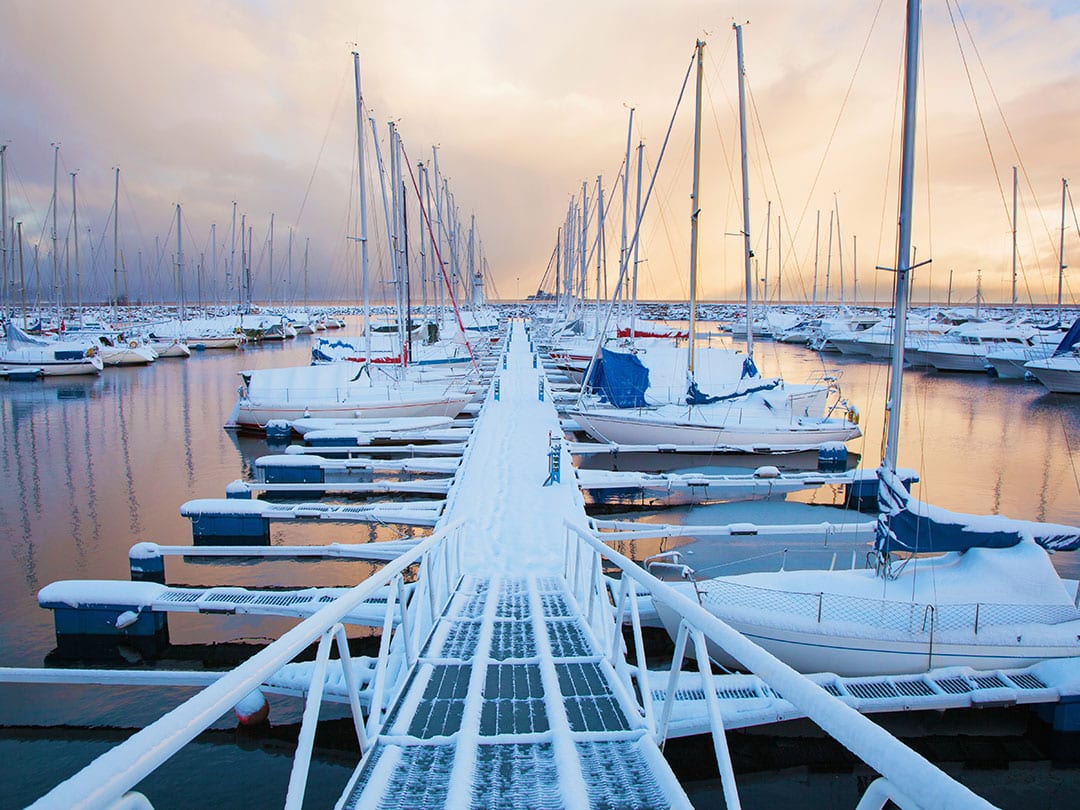Boat ownership can be a year of two halves and over the winter your boat may be standing out of water or potentially sat idle for long periods of time. Either way it is essential to maintain your boat to prepare it for whatever it may face over the winter period and, fortunately, it doesn’t have to cost the Earth.
What does winterising your boat mean?
Winterising your boat simply means preparing it for winter. This guide is for preparing your boat for the English winter weather rather than the more severe weather and constant sub zero temperatures seen elsewhere in the world.
Should you take your boat out of the water in winter?
If you can, USE IT! Many key components of boats really don’t like being inactive so the best way to prevent many of the problems associated with boats over winter is to use them.
However, there are other things to take into consideration. For instance, whether you boat is on a floating mooring or in a sheltered harbour? Is your boat easy to get to or is a tender required? It is much easier to keep an eye on, bail out and maintain boats in a marina than those which require a tender to get to. All these things can make a huge difference when it comes to protection and potential damage in the case of severe weather and storms.
Boats on land get much colder than those left in the water as the chill factor is increased by the wind whistling all around the hull. Because of this it is essential that you remove all liquids that can freeze in the low temperatures. This will prevent freezing and cracking to any pipework that can cause extensive and expensive damage.
Whether you opt to leave it in or take your boat out of the water for winter there are plenty of maintenance tasks that can help you to best look after it over the cold weather.
How do you winterise your boat?
Winterising your engine
Your boat engine is arguably the most important part of your vessel – without it you aren’t going anywhere! So be sure to prepare it for those winter months to prevent corrosion and permanent cold weather damage.
Firstly you will need to change the engine oil and oil filter, just like you would on your car, regularly doing this can help prevent the build up of contaminants and keep your engine running more smoothly and reliably.
Next flush the engine with fresh water to prevent rusting and the build up of mineral deposits from the sea water. After which, add biodegradable, fresh antifreeze and engine coolant and run the engine, keeping it running until antifreeze leaves the exhaust.
There are a few other key jobs to do to your engine before the cold bites; change the gear oil if it looks milky and lubricate the cylinders, drain the gear case, change the transmission fluid, give any outboard engines a wash down with mild detergent, check, wash down and lubricate the stern drive and check any other fluid levels.
Winterising your boat fuel tank
If you are lifting your boat out of the water for winter be sure to completely fill the tank to the brim to avoid condensation which, in turn, promotes the growth of diesel bugs. Before topping up, you can add a fuel treatment to kill off any diesel bugs which may already be present.
You may also want to change your fuel filters and the water separator and clean the fuel line if bringing your boat ashore.
Winterising your boat plumbing
Empty your boat’s water tanks, including the hot water tank and run the pipes, cold and hot water pump and filters empty.
Be sure to flush any tanks with sterilising solution to rid any bacterial, algal or fungal growth and then either drain the plumbing completely or fill with antifreeze. Do be sure to use the low-toxicity propylene glycol-based antifreeze rather than the ethylene glycol-based antifreeze that should only be used alongside engine coolant in your boat engine.
If draining the system leave the taps in the open position so that any condensation can drain out. These steps will help prevent the freezing temperatures causing splits or cracks in pipes that will lead to flooding.
Preventing flooding and sinking of your boat over winter
Check your bilge pumps are in good working order to rid the bilge of any excess storm water, rainfall or any water that has gotten in through a small leak.
Greasing the stern tube before leaving the boat will prevent water coming in as the grease acts like a seal whilst the propeller is not in use.
Check your drains and subsequent piping are free from debris such as leaves, use something sieve-like to keep them open in winter to prevent flooding.
Check your boat covers but don’t rely on these if leaving your boat on the water in winter, regularly check your vessel, especially after periods of prolonged rainfall to ensure there is no excess water on board.
Furthermore, your boat’s covers have a finite lifespan so do check them regularly, paying particular attention to any seams and replace them as soon as possible when you notice they are no longer effective at repelling water. Many of the cheap plastic tarpaulins disintegrate very quickly in the wind and under constant UV light, therefore it is worth investing in a good quality canvas tarpaulin or proper boat cover.
You may wish to plug into shore power to set up heaters and dehumidifiers on board which will help to prevent any damp from causing issues and help prevent freezing of the plumbing.
Winterising your boat and its mooring
Ensure the mooring chain is in good condition, your boat’s mooring pins and ropes are secure, yet slack enough to deal with the normal rise or fall of water levels at this time of year. If possible add an additional line to higher ground as a lifeline in case the boat breaks free of its mooring in high winter winds.
General yacht maintenance
Of course there is much more to yacht maintenance than simply preparing your boat for the winter season; checking safety equipment and fire extinguishers, checking wheel steering systems, checking your hot water heater pump, checking for damage to sails, checking the propeller and rudder bearings, amongst many other tasks as winter is often the time to carry out all of the maintenance tasks before getting ready to set sail the following spring. You can read our comprehensive yacht maintenance checklist in our previous blog.
Remember, winter is the perfect time to install your ultrasonic antifouling system! With no through-hull drilling and no tedious reapplication of gel coats it can be a boat owners best friend in the winter months. Feel free to check out the ultrasonic antifouling products we have on offer or contact our team for help deciding which ultrasonic antifouling system best suits your needs.


